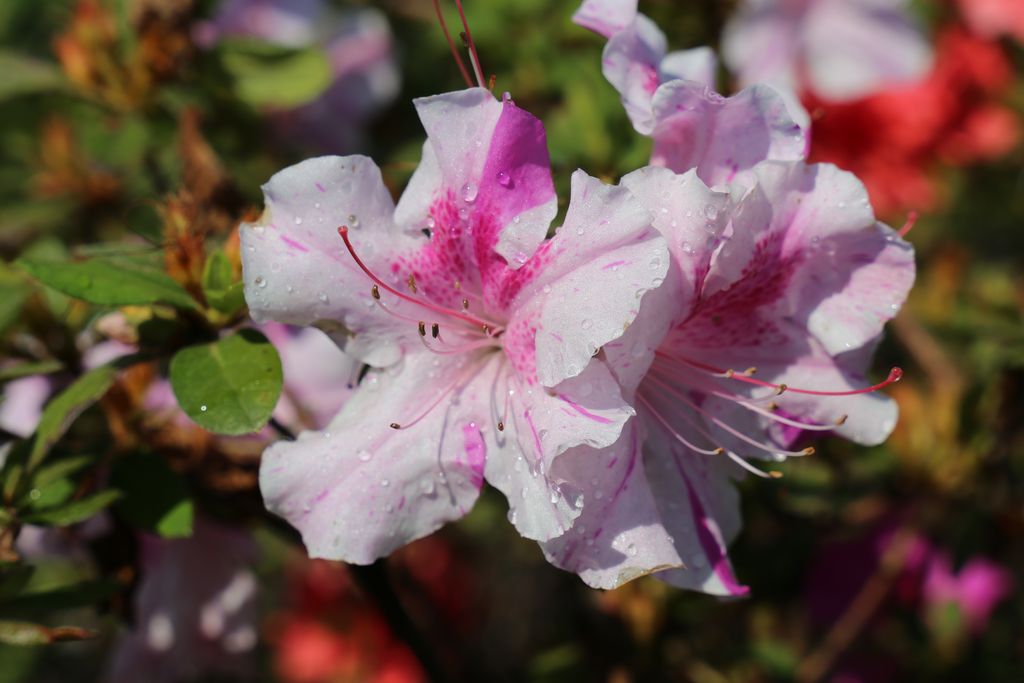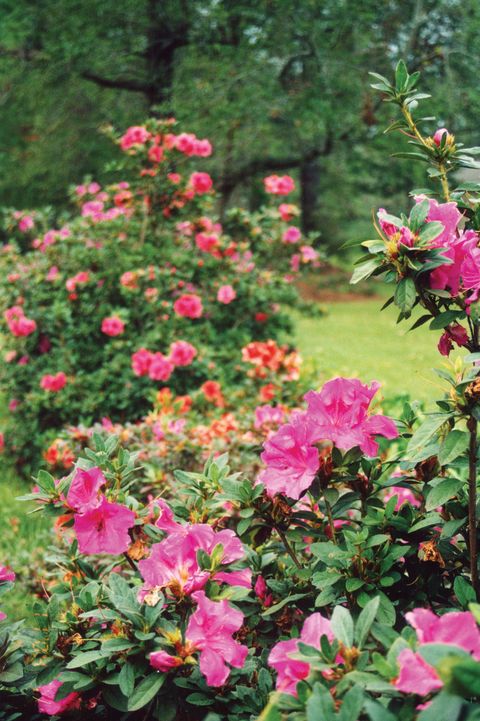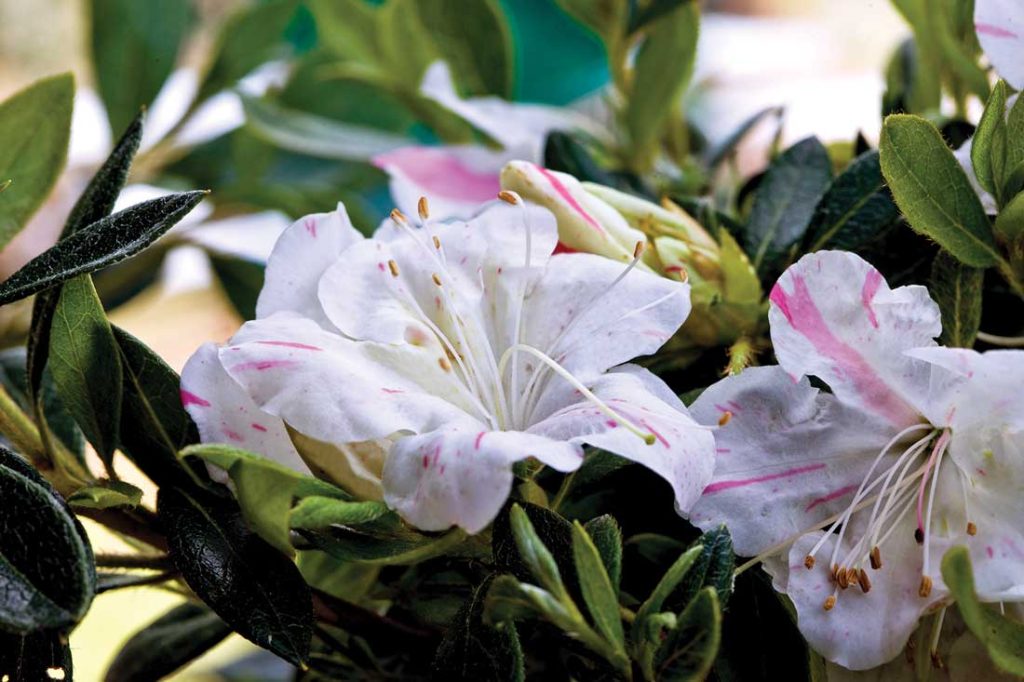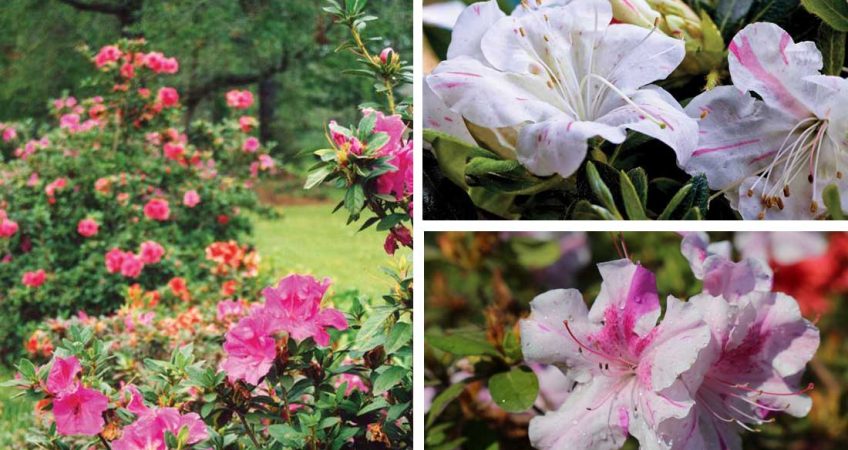Introduction
Are you looking for a way to add colour to your NZ garden? In this article, we’ll discuss some of the best flowering azaleas that will fit the bill nicely, with spectacular blooms for much of the year, including during autumn.
Choosing the Right Azaleas for Your Garden
Azalea Varieties Suited to New Zealand’s Climate
When selecting azaleas for your garden, understanding the distinction between Rhododendron spp. is important. Both rhododendrons and azaleas are within the same genus, with the main difference being size: rhododendrons are tall shrubby trees, while azaleas are shorter shrubs perfect for border definition or short hedges.
Not all azaleas are suited to your local climate, neither will every variety provide autumnal colour, but the following azalea cultivars will flower in autumn and are perfect for many climates in both the south and north islands of New Zealand.
Autumn Twist™ Azalea
Autumn Twist™ Rhododendron hybrid is a standout shrub that promises to bring vibrant colours to New Zealand gardens not only during autumn but throughout other months as well. It displays striking light pink flowers adorned with fuchsia stripes, offering a repeat bloom in spring, summer, and autumn. This variety has been tested for three years and has shown no signs of flower blight, attesting to its robustness. In addition to its visual appeal, Autumn Twist™ Azalea is highly resistant to lace bugs, making it a low-maintenance choice for gardeners.
Introducing Autumn Twist Azalea.

This azalea can reach a height of 1.25m and width of 1m, making it suitable for specimen planting, mass planting, and use in gardens and borders. It thrives in full sun to part shade, tolerates frost, and becomes more drought-tolerant as it matures, although it prefers moist well-drained soils.
For care, it’s recommended to water well during the first year until the plant is fully established. A well-mulched garden and occasional use of slow-release fertiliser in spring will support its health and flowering. Pruning after spring flowering is advised for best results, but save it for a cooler day or perhaps even during the late afternoon to avoid stressing plant. Autumn Twist™ Azalea is suited for growth in both the North and South Islands of New Zealand.
Autumn Royalty™ Azalea
Autumn Royalty™ Rhododendron hybrid is an Azalea variety celebrated for its regal display of rich, purple flowers. This vigorous grower is another variety known for its repeat blooming ability, ensuring a lush display of colour in spring, summer, and autumn. This variety also boasts robust growth and disease resistance, including resilience against lace bugs.
Introducing Autumn Royalty Azalea.

Ideal for creating a bold statement in the garden, Autumn Royalty™ reaches a mature size of approximately 1.2m in height and width. It’s perfect for use in hedges, mass plantings, or as a stunning focal point. This azalea prefers a position in full sun to part shade and requires well-drained soil.
Like other azaleas, it benefits from being planted in a well-mulched garden and occasional feeding with slow-release fertiliser to encourage vibrant blooms. Autumn Royalty™ Azalea is adaptable to a range of conditions found across New Zealand.
Autumn Starlite™ Azalea
Autumn Starlite™ Rhododendron hybrid brings a delicate touch to the garden with its white flowers featuring pink stripes and occasional freckles. This variety offers multiple seasons of interest, blooming profusely in spring, summer, and autumn. Its compact growth habit and resistance to lace bugs make it another excellent choice for New Zealand gardens looking for beauty without the hassle.
Introducing Autumn Starlight Azalea.

Reaching up to 1m in height and spread, the Autumn Starlite™ is versatile for various garden applications, including borders, container plantings, and as an accent plant. It flourishes in full sun to part shade conditions and prefers well-drained soil. Ensuring the plant is well-watered during its first year and applying mulch will help in establishing a robust root system.
For maintaining its shape and encouraging flowering, pruning after the spring bloom is recommended. Autumn Starlite™ Azalea is well-suited to the diverse climates of New Zealand, offering a stunning floral display and foliage interest throughout much of the year.
Site Selection and Soil Preparation
Location, Location, Location
The right location is paramount for azalea health and colour display. A site that offers morning sunlight with afternoon shade is ideal, but the above azaleas are pretty resilient to full sun or part shade at different times of the day.
Shelter from harsh winds will help prevent premature leaf drop, preserving the plant’s autumnal beauty.
Soil Matters
Azaleas generally prefer a free-draining, acidic soil (4.5-6.0) but the above azaleas, again, are more adaptable than other azaleas on the market. Incorporating organic matter such as compost or pine bark can improve soil texture and fertility, creating an ideal growing medium for azaleas.
Good drainage is essential to avoid root rot, a common issue for azaleas in waterlogged soils.
The Root of the Matter
Ensuring proper root growth is vital. Azaleas prefer well-aerated soil that allows for easy root expansion without being waterlogged. Preparing a planting bed raised above the natural soil level can enhance drainage and aeration, promoting healthy root development.
Planting and Caring for Azaleas
Planting Techniques
Timing
The best time to plant azaleas in New Zealand is during the cooler (but not cold) months of autumn or early spring. This timing allows the plants to establish themselves before the stress of summer heat or winter cold.
Planting Depth and Method
Planting azaleas at the correct depth is critical. The top of the root ball should be level with the surrounding soil and mulch to prevent waterlogging. A hole at least twice as wide and exactly as deep as the root ball encourages roots to spread horizontally, anchoring the plant and facilitating nutrient uptake.
Watering In
After planting, thorough watering helps settle the soil around the roots and eliminate air pockets. Consistent moisture during the first growing season helps establish a strong root system, which is important for the plant’s overall health and its ability to display vibrant autumn colours.
Avoid waterlogging conditions even during establishment to prevent root rot. We want moist soil, which isn’t yet soggy.
Ongoing Care
Water
Maintaining balanced moisture levels is key, especially during dry periods. Mulching can help retain soil moisture, but be mindful to keep mulch away from the plant’s stem to prevent rot.
Azaleas like moist, free-draining soil that doesn’t become waterlogged.
Feeding
The general advice is to feed your azaleas before and after flowering to encourage new bud growth. With varieties that display extended flowering periods, feel free to feed at any time of the year.
Organic fertilisers can help to amend soil texture and nourish the soil biota, which increases your plant’s health. Products specifically marketed for acid-loving plants like azaleas and rhododendrons can help avoid making your soil too alkaline.
Mulch
Mulch not only conserves soil moisture but also regulates soil temperature and reduces weed competition. Organic mulches like pine needles or shredded bark are ideal, as they gradually break down, adding nutrients to the soil. Pine needles have the added advantage of being acidic.
Pruning
Pruning azaleas immediately after their spring blooming period ends encourages bushier growth and more prolific flowering. It also allows time for new growth to mature and display autumn colours. Remove dead or diseased wood and thin out dense areas to improve air circulation.
Azaleas take a long time to grow their blooms, and pruning while those blooms are still growing can significantly hinder the growth of those blooms. If you must prune before blooming, understand that the upcoming flowering season will be much less impressive. Try to leave as many buds as you can, as each one is a potential flower.
Common Challenges and Solutions
Pest and Disease Management
Common Culprits
Azaleas, while robust, can fall prey to pests such as aphids, lace bugs, leaf miners, and diseases like powdery mildew and root rot. Aphids suck sap from the leaves, weakening the plant, whereas lace bugs damage the foliage, diminishing its autumnal beauty. Fungal diseases can lead to discolouration and premature leaf fall, affecting the overall health and colour display.
Proactive Protection
Preventative measures, including maintaining healthy soil, ensuring adequate air circulation, and removing fallen leaves around stems, can significantly reduce the incidence of pests and diseases.
Natural predators like ladybirds and micro wasps can be encouraged in the garden to control aphid populations. Regular inspections allow for early detection and treatment, minimising impact. Biodiverse planting, especially with open flowers, as well as avoiding chemical pesticides, can attract these beneficial insects.
Treatment Tips
For confirmed infestations or infections, choose treatments that are safe for the plant and the environment. Horticultural oil, purchasing beneficial insects, and physical methods such as spraying the leaves with water can help knock populations down quickly without negatively affecting beneficial predators too much.
Always prioritise integrated pest management (IPM) strategies to address issues without resorting to harsh chemicals which can work short-term but have long-term consequences.
Adapting to Climate Variability
Drought Strategies
In times of drought, maintaining azaleas can be challenging. Mulching, using water-conserving irrigation practices such as drip irrigation, and selecting drought-tolerant companion plants can help conserve moisture. Watering deeply and less frequently encourages deeper root growth, enhancing drought resistance.
Wet Weather Woes
Excessive rainfall can lead to waterlogged soils and root rot. Improving drainage, either by amending the soil with organic matter (and gypsum for clays) or installing drainage systems, can prevent these issues. Raised beds are another effective strategy for ensuring adequate drainage.
Climate-Resilient Varieties
Selecting azalea varieties known for their adaptability to a range of climate conditions, such as those mentioned above, can offer a buffer against unpredictable weather patterns.
Conclusion
Autumn is a time of year when fewer ornamental flowers are in bloom. Choosing the longer-flowering azalea varies discussed in this article can help you create gardens that stand out when compared to neighbouring gardens with less interest.
By planting and maintaining your azaleas correctly, implementing strategies to manage pests and diseases, and adapting to climate variability, you can enjoy the full potential of these versatile shrubs.

